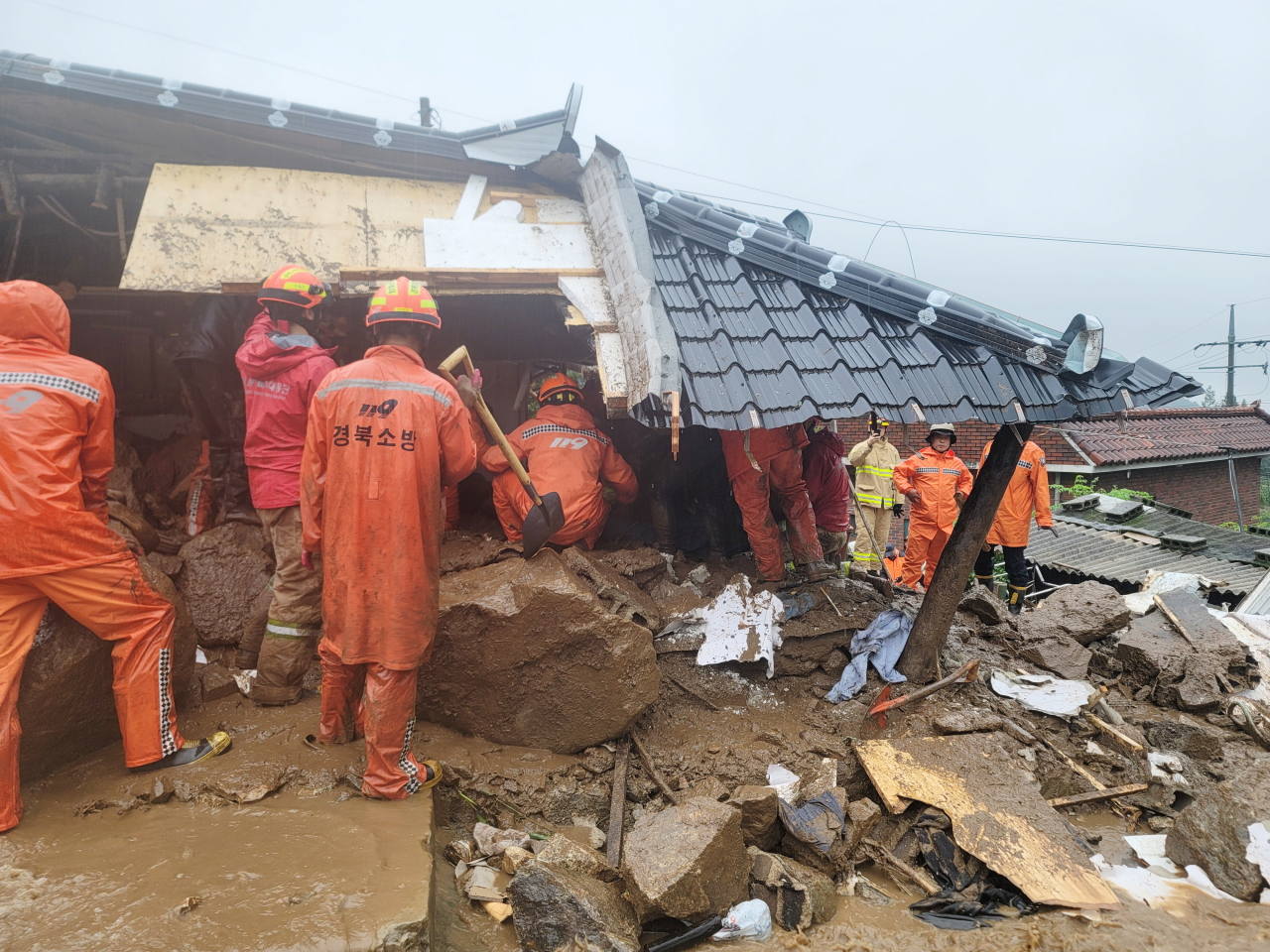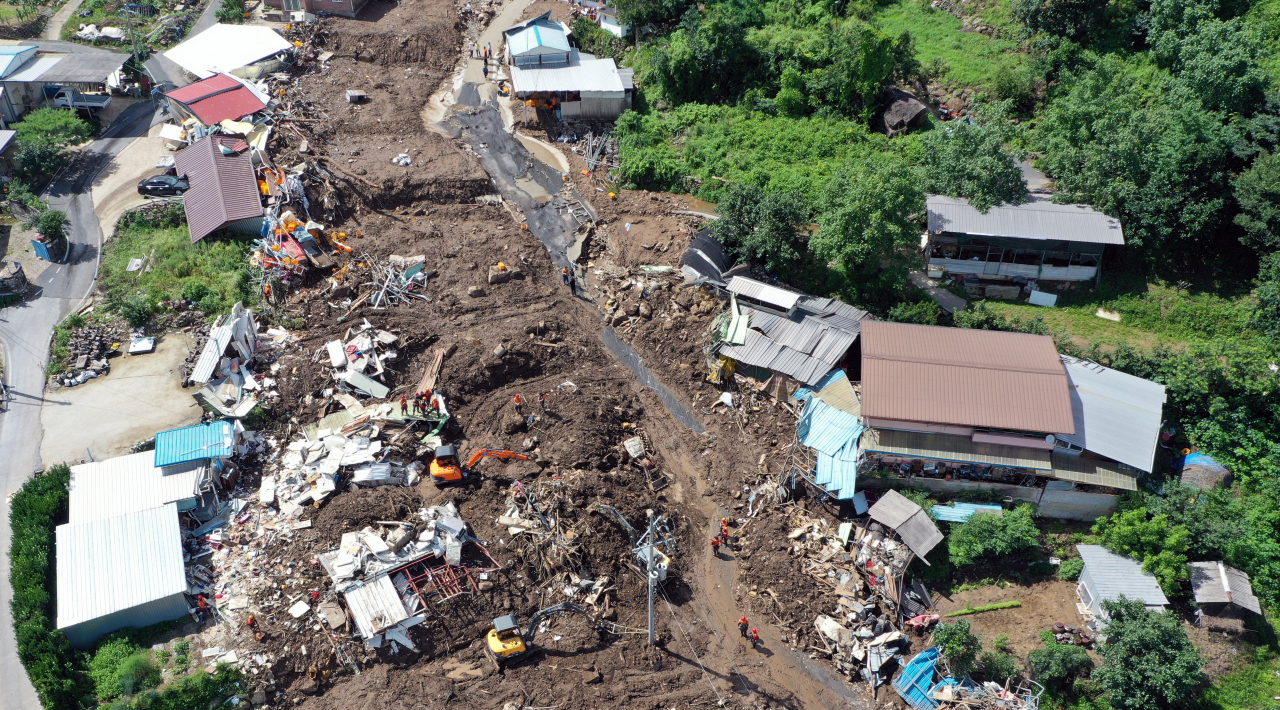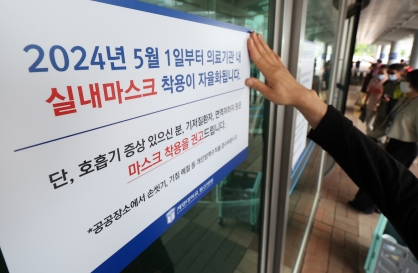
When torrential rain continues for days, hillside homes can be just as dangerous as riverside dwellings. This served as a painful lesson for South Korea, as several landslides caused casualties across the country.
The record July downpour has left 50 people dead or missing nationwide as of 11 a.m. Tuesday. Of them, 21 fatalities and six missing cases were reported in North Gyeongsang Province, where landslides devastated several hillside villages. Twelve of the province’s casualties were claimed by mudslides.
Apart from two cases, 10 victims faced the unexpected disaster in areas not designated as “vulnerable to landslides,” highlighting a significant flaw in the nation’s landslide preparedness.
Experts say Korea must now wake up to dangers lurking in mountains and hills covering 70 percent of the country’s landscape, in the face of increasingly frequent extreme weather events.
"Residents often lack awareness about potential dangers in their surroundings that could trigger landslides,” Lee Su-gon, a renowned landslide expert and former civil engineering professor at the University of Seoul, told The Korea Herald, pointing out that numerous homes sit at the foot of mountains or near valley streams.
Blind spots in danger zones
According to the Korea Forest Service, North Gyeongsang Province, the region hit hardest by the mudslides, houses the highest number of residents living in landslide-prone areas at 9,977, followed by Gyeonggi Province and South Gyeongsang Province, with 9,572 and 8,472 residents, respectively.
The province has approximately 5,000 areas designated as "vulnerable to landslides."
The latest tragedies have revealed the need for the local authority to revise its designation standards to address potential blind spots, an official at the provincial government told The Herald.
“Most casualties have been reported in areas not cautioned about possible landslides,” the official said.
Authorities sent out text messages to residents, warning them about the potential risks of floods, landslides and other disasters that could be triggered by heavy rainfall. But communication via text messages fell short of adequately alerting them to the impending danger.
The North Gyeongsang official noted that most of the available personnel were allocated to densely populated regions rather than remote areas, admitting their limited capacity to guide and assist residents in case of evacuation.
Regarding the casualties resulting from landslides, the official reasoned that people did not take the notifications seriously due to the absence of previous landslide incidents in their regions.
Furthermore, many of the local residents are elderly who are not accustomed to relying on their mobile phones for information.
Statistics Korea reveals that the population of individuals aged over 65 constituted 20.7 percent in 2020 in North Gyeongsang Province and is projected to rise to 25.7 percent in 2025 and to exceed 43.9 percent in 2045.
A 63-year-old man named Song, the chief of Samga-ri village, Yeongju, vividly recalled the events of Saturday night when he made announcements through outdoor speakers after receiving emergency text messages.
However, despite his efforts, he could not prevent the loss of two lives in the village due to landslides.
“We have never seen such landslides before in at least 50 years. People were not aware of the potential risks,” Song said. “And the victims were disabled people. How could have they possibly escaped from the house?”
Landslide risks are not confined to rural villages.
Mountains are a prominent feature in Korean cities, with Seoul alone being home to 14 peaks surpassing 300 meters in height. When accounting for smaller mountains, the total number exceeds 100 throughout the city.
In 2011, torrential rains triggered landslides at the 290-meter Umyeonsan in southern Seoul, killing 17 residents.
Overhaul needed
Lee, the landslide expert, emphasized the importance of step-by-step measures to establish a comprehensive system to effectively prevent and respond to landslides.
“The current systems do not adequately consider key geomorphological, geological and geotechnical factors specific to Korea,” he said.
It is important to note that landslides are caused not only by natural factors, but also by human activities, including agriculture, deforestation and hill cutting, he stressed.
"The designated areas in fact have little relation to human losses because it excludes areas altered by human activities, which can result in human-influenced landslides," he said.
Regarding the extensive nationwide research required to pinpoint dangerous areas, a task that could take approximately 54 years if carried out solely by the state-run Korea Forest Service, Lee emphasizes the role of local residents who have a better understanding of their local geography.
He suggested, "involving local residents would help in sending more specific and accurate emergency text messages. Moreover, considering the dynamic nature of natural environments, which cannot be continuously monitored by government officials, local residents are required to actively participate in reporting to the national disaster prevention system.”
To erect an anti-landslide wall, the height should be at least 2 meters, he advised.
"The thickness of weathered soil is relatively shallow in Korea, and observations at numerous debris flow sites indicate that the vertical extent of damage to trees and buildings is often to a height of 1 or 2 meters. Therefore, protection to a height of 2 meters is likely to be effective in the majority of cases."





![[Music in drama] Rekindle a love that slipped through your fingers](http://res.heraldm.com/phpwas/restmb_idxmake.php?idx=644&simg=/content/image/2024/05/01/20240501050484_0.jpg&u=20240501151646)

![[New faces of Assembly] Architect behind ‘audacious initiative’ believes in denuclearized North Korea](http://res.heraldm.com/phpwas/restmb_idxmake.php?idx=644&simg=/content/image/2024/05/01/20240501050627_0.jpg&u=20240502093000)


![[KH Explains] Will alternative trading platform shake up Korean stock market?](http://res.heraldm.com/phpwas/restmb_idxmake.php?idx=644&simg=/content/image/2024/05/01/20240501050557_0.jpg&u=20240501161906)









